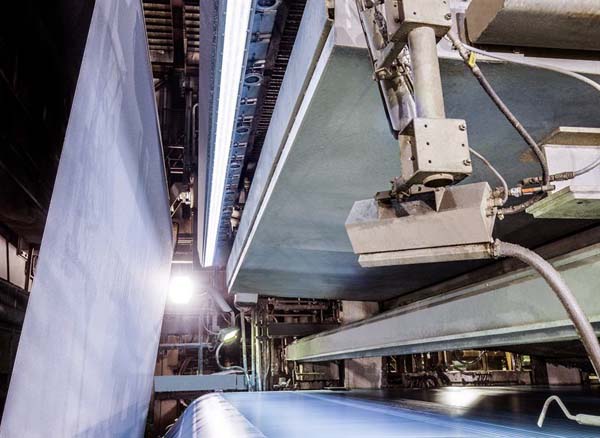WEIG-Karton Boosts Board Machine Performance with Web Inspection
![]() Print this Article | Send to Colleague
Print this Article | Send to Colleague
WEIG-Karton, Germany, has been working closely with Procemex, Finland, since 2009 to improve the optical process monitoring on its folding boxboard line. Initially a fully integrated Procemex web monitoring and inspection system was installed. In 2013 the resolution was doubled by updating the cameras to the latest FullHD technology, and the po¬tential for product quality improvements was further increased.
In 2013, WEIG-Karton decided to fit its gypsum linerboard machine, KM6, with a portable high speed camera system. Four FullHD pinhole cameras were installed at the wet end of the machine to improve troubleshooting accuracy. This new setup proved to be a great suc¬cess: it helped the operators to focus their troubleshooting in the right areas of the wet end. The success of the first experiment lead to further innovation collaboration between WEIG and Procemex. Together the teams developed a deployment concept of a camera system that would cover all of the board machine, not just the wet end.
The team’s ground-breaking idea was to monitor the wire with a pinhole web inspection beam. Procemex had previously used camera beams to inspect pick-up areas with promising results, and they had de¬veloped a pinhole beam technology for full-width web monitoring and inspect¬ing extreme areas of paper machines. The technology guarantees seamless inspection without any disturbances brought by con¬ventional cleaning mechanisms, such as wipers.
Thanks to the new technology, web inspection beams can be used in even the most demanding areas of paper and board machines. This was the preferred beam technology for the exit press section and the sizing press entry. The same image resolution could be used in all three beam positions to compare events with each other. Single pinhole cameras were installed along¬side the beams on the headbox of the KM6. Now defects and their root causes can be iden¬tified quickly through a process of elimination.
To develop a comprehensive solution for the KM6, additional web monitoring cameras were installed at the second press, pre-dryer section, and exit from the size press. Due to experienced and dedicated teams at both WEIG-Karton and Procemex, the sys¬tem was completed in August 2014. Procemex trained WEIG operators and engineers to oper¬ate and take care of the system in an efficient way. Today, a total of 40 single cameras are used to monitor the process and quality of their paper machines, and three 42-in. monitors display live images of the production.
"After the commissioning we could see a major improvement in process monitoring quality. The reaction times were significantly reduced. In addition to defect detection, the condition monitoring of wires and felts plays a significant role in ensuring the economic operation of the material. For example, a hole in the 3rd dryer group felt and wire defect in the former section could be quickly detected and corrected," said Henning Dippel, KM6 operating manager, Weig-Karton.

"It is not just the image quality and work of Procemex that impresses me. The intensive partnership and results oriented co-operation are essential success factors for a sustainable quality control," Dippel added.
Mika Valkonen, CEO, Procemex, noted that "Procemex pinhole camera and LED light beam technology are specifically developed for the most challenging wet end and finishing area environments. It is essential to analyze and understand the root causes of web breaks and defects, and eliminate them quickly. We started developing the wet end frame concept in Finland three years ago. The first pinhole camera beam was installed under the pick-up felt of a paper machine. This turned out to be very helpful in solving runnability issues and improving machine efficiency. We soon realized that the concept also works in several other positions where conventional solutions cannot stay clean enough to perform.
"Monitoring the forming area is very important, as typically 80%-90% of web breaks originate there. Collaborating with innovative clients such as Weig-Karton pushes our process and quality understanding forward, beyond conventional boundaries. This is the only way to improve machine efficiency and product quality," Valkonen said.


